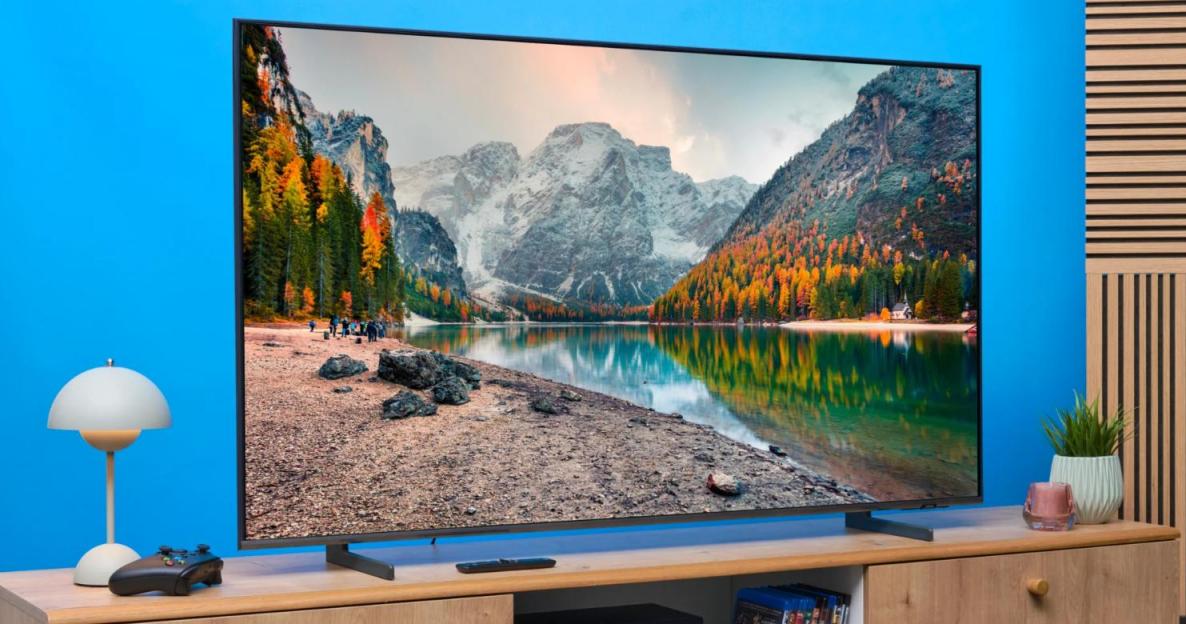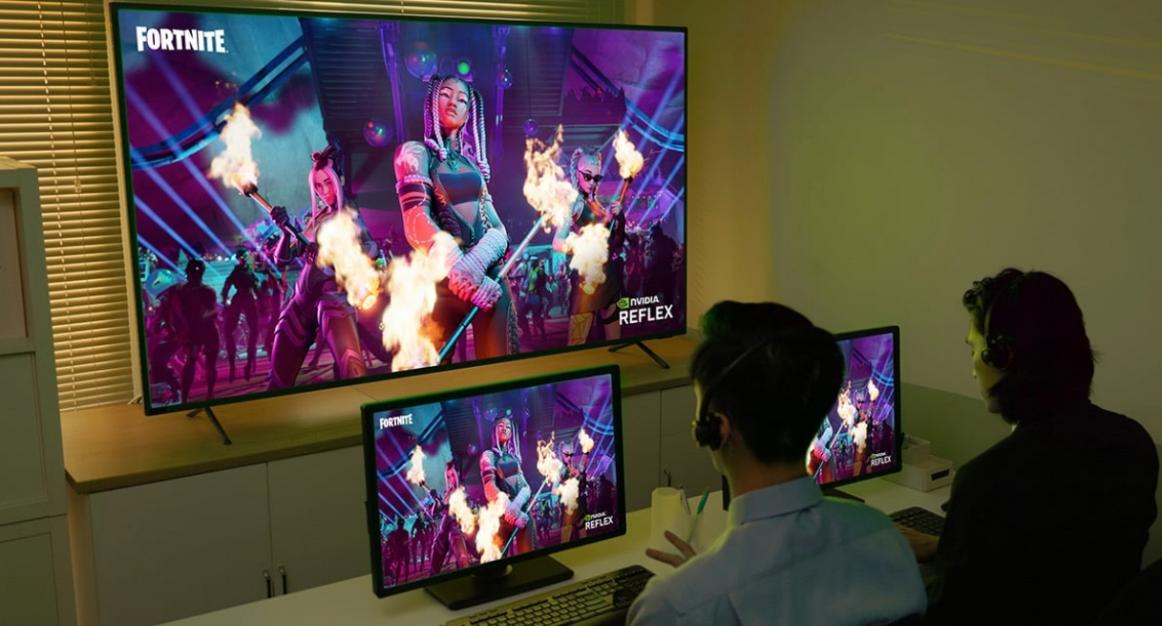Choosing the right TV for gaming can significantly impact your experience. Gamers often debate whether OLED or QLED technology is better suited to meet their needs. Both technologies have their unique advantages and drawbacks, affecting gaming performance in various ways. We will explore their core differences, how they perform under gaming conditions, and consider factors like input lag, HDR, room lighting, and potential issues like burn-in. By understanding these elements, gamers can make an informed decision on whether Line TV’s OLED or QLED models are the superior choice for enhancing their gaming setup.

What Are OLED and QLED Technologies?
OLED (Organic Light Emitting Diode) technology allows each pixel to emit its light. This independence provides unparalleled contrast and deep blacks, with pixel-level control enabling perfect black levels. OLED screens are praised for their vibrant colors and wide viewing angles. However, they can be prone to burn-in, since static images left on the screen for extended periods can leave ghostly traces.
QLED (Quantum Dot LED) technology, on the other hand, uses a quantum dot filter between the LED backlight and the LCD screen. This setup enhances brightness and color accuracy. QLED TVs are typically brighter than OLEDs, making them well-suited for bright rooms. While QLED TVs can’t match the black levels of OLEDs, they generally avoid burn-in and offer a longer overall lifespan. Understanding these technological variations is crucial for choosing the right gaming TV, as both have specific strengths and weaknesses that impact performance.
How Do OLED and QLED TVs Perform in Gaming?
OLED and QLED TVs have distinct performance traits in gaming scenarios. OLED TVs are admired for their low input lag and exceptional picture quality, whereas QLED TVs boast brighter displays and vivid colors.
Input Lag and Response Time
Input lag denotes the delay between user input and the TV’s response. OLED TVs are known for their superior input lag times, often achieving less than 1 millisecond. Gamers benefit from this, especially in competitive or fast-paced games where reaction time is crucial. QLED TVs, with a slightly higher range of input lag, still deliver acceptable performance for casual gamers. For response time, OLEDs again lead with instantaneous pixel-level changes, minimizing motion blur, a feature important in action-packed games.
HDR and Brightness
HDR (High Dynamic Range) elevates gaming visuals by providing a higher contrast ratio and a broader color palette. QLED TVs typically excel in brightness, enhancing HDR’s effectiveness in well-lit rooms. Their bright displays maintain color integrity even in sunny conditions, enhancing details. OLEDs, while slightly less bright, offer excellent performance in dark environments due to their perfect blacks, providing an immersive HDR experience with rich colors and depth, vital for atmospheric games or darker settings.
Motion Handling and Refresh Rates
Motion handling and refresh rates significantly affect the fluidity of the gaming experience. OLED TVs score high marks with excellent motion handling, thanks to their fast response times. Gamers experience minimal motion blur during rapid movements. QLED models generally offer high refresh rates, commonly supporting up to 120Hz, delivering smooth gameplay. Both OLED and QLED technologies are advancing in these areas, ensuring gaming still feels responsive and visually engaging. However, the OLED’s instant response time can give it a subtle edge in fast-paced gaming.
Which Is More Suitable for Your Gaming Setup?
Determining the better option for your gaming setup depends on your specific needs, including the environment and gaming habits.

Room Lighting Conditions: Bright vs. Dark Environments
If gaming occurs in a bright room, a QLED TV may be more suitable due to its high brightness and vivid color performance under ambient light. Conversely, OLEDs’ deeper blacks enhance the experience in darker environments, providing atmospheric immersion in low-light scenes. The competing strength of each under different lighting conditions helps inform the choice based on your specific room setup.
Risk of Burn-in and Image Retention: What Gamers Should Know
Burn-in is a risk where static images burn a ghostly imprint onto OLED screens over time. Gamers who frequently engage with graphics-rich games may need to consider this potential issue. QLED TVs, by avoiding burn-in due to their screen structure, offer peace of mind for those who game with static elements on screen frequently, although modern OLEDs are increasingly resistant.
Budget and Longevity: Cost-Effectiveness Over Time
OLED TVs traditionally carry a higher price tag, but they deliver exceptional picture quality, making them a great long-term investment. QLED TVs are generally more affordable and tend to have longer lifespans, which can appeal to those prioritizing budget and longevity. Evaluating cost-effectiveness balances initial expenses against long-term value, particularly important for gamers continuously upgrading setups.
Conclusion
Comparing OLED and QLED for gaming recognizes each technology’s unique strengths. OLED excels in response time, perfect blacks, and offers an immersive experience in dim environments. QLED rises with brighter displays, detailed HDR, and longevity, performing well under bright conditions. Gamers must weigh factors like input lag, brightness, room conditions, burn-in risk, and budget to determine the best fit. Both technologies have evolved, and continuing advancements mean either choice can elevate gaming to new levels of enjoyment.
FAQ
Can OLED TVs Suffer from Burn-In During Gaming?
Yes, OLED TVs can suffer burn-in if static images are displayed for extended periods. While modern OLEDs are designed to mitigate this risk, it’s still something gamers should consider, especially for games with static HUDs or menus.
Do QLED TVs Support High Refresh Rates for Gaming?
QLED TVs generally support high refresh rates, often up to 120Hz, making them suitable for smooth and responsive gaming. This capability ensures less motion blur and more immersive gameplay, particularly for fast-action games.
Is Line TV Offering Both OLED and QLED Models?
Line TV provides a diverse selection with both OLED and QLED models available. This variety ensures that gamers can select a television that caters to their specific preferences, gaming environments, and budget constraints, while benefiting from advanced technology features on offer.
